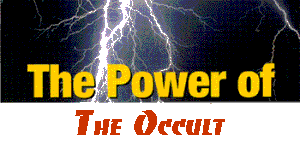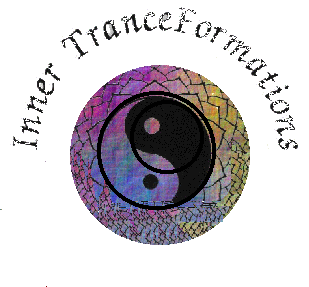WAKE UP!


I do not vouch for the
authenticity or correctness of the information contained in any of the
links / sites / addresses listed below, use your own judgement, BTW some
of these links may not work from time to time.
Navigation




Go
to menu

A short treatise on Kundalini.
KUNDALINI: Frequently-Asked-Questions & selected
references
Version 1.0, August 1994Copyright
Kurt Keutzer, 1994The author grants
the right to copy and distribute this file, provided it remains unmodified
and original authorship and copyright is retained. The author retains both
the right and intention to modify and extend this document.TABLE
OF CONTENTS :
-
What is kundalini?
-
What does kundalini have to do with spiritual enlightenment?
-
Does everyone agree that kundalini awakening is necessary
for enlightenment?
-
Is there any scientific basis for kundalini and the cakras?
Do I really have to believe that all these cakras physically exist?
-
Is kundalini the same as prana or qi? Is Chinese qi gong
a kind of kundalini yoga?
-
What about Tibetan Buddhism - has kundalini been known
in Tibet?
-
Are there any other traditions that show awareness
of kundalini?
-
So how do I awaken kundalini?
-
Are these methods of awakening kundalini dangerous? What
about Gopi Krishna's books?
-
10. Some approaches to kundalini yoga say there is
no danger in their approach - are they misrepresenting themselves?
-
But even if kundalini is dangerous, isn't it a faster
way to enlighenment?
-
There have been many scandals among kundalini yoga teachers
- particularly sexual scandals. Is there a correlation between sexual scandals
and kundalini yoga practice?
-
If my kundalini is awakened will I need to change
my lifestyle?
-
Where can I learn more?
I bow to the vibrant source of my innermost bliss.
What is kundalini?``Kundalini'' literally
means coiling, like a snake.In the classical literature of hatha yoga kundalini
is described as a coiled serpent at the base of the spine. The image of
coiling, like a spring, conveys the sense of untapped potential energy.
Perhaps more meaningfully kundalini can be described as a great reservoir
of creative energy at the base of the spine.From a psychological perspective
kundalini can be thought of as a rich source of psychic or libidinous energy
in our unconsicous.Back to Table of Contents
Go to menu
What does kundalini
have to do with spiritual enlightenment?First we need a few concepts:
In yogic anatomy the sushumna is the central channel and conduit for the
kundalini energy that runs along our spine and up to the crown of our head.
Along this channel are placed additional channel networks called cakras.
These cakras are associated with major aspects of our anatomy - for example
our throat, heart, solar plexus, and in turn these aspects of our anatomy
are related to aspects of our human nature. For example we have many everyday
associations with the heart that do not make sense relative to our physical
heart. We say: `` I don't have the heart to tell him.'' ;``Take heart.''
``She's so kind hearted.'' All of these allude to some sort of subtle functioning
associated with the heart area.In many systems of spiritual practice enlightenment
is precisely correlated with the kundalini awakening from its slumber at
the base of the spine rising through the sushumna and ultimately reaching
our crown. When the kundalini is permanently fixed in the crown then enlightenment
is achieved.It's not useful to sit with our consciousness fixed in our
head and think of kundalini as a foreign force running up and down our
spine. Unfortunately the serpent image may serve to accentuate this alien
nature of the image. It's more useful to think of kundalini energy as the
very foundation of our consciousness so when kundalini moves through the
sushumna and through our cakras our consciousness necessarily changes with
it.Back to Table of Contents
Go to menu
So does everyone
agree that kundalini awakening is necessary for enlightenment?This
view is held in the diverse literature of Kashmir Shaivism and in other
Hindu Tantric literature. It is found in the literature of the Hatha Yogis
and the Nath Sampradaya. You will find similar views in many Buddhist Tantric
works. In addition this view is held by recent spiritual figures such as
Shri Ramakrishna, Swami Sivananda, Paramahamsa Yogananda and Swami Vivekananda
and of course by contemporary kundalini yogins themselves. Nevertheless
there are some dissenters from this view. These include Sri Chinmoy, Da
Free John and Gurdjieff. Then there are many other spiritual practices,
such as Zen, Vipassana meditation that consider kundalini irrelevant.Back
to Table of Contents
Go to menu
Is there any
scientific basis for kundalini and the cakras? Do I really have to believe
that all these cakras physically exist?Research on kundalini is especially
spotty. There is no compelling work to show that the system represents
insights into actual human anatomy. But it's important to understand that
kundalini and its network of channels and cakras is simply how yogins have
chosen to explain their experience and that yogins from many cultures have
arrived at similar, though not identical, concepts. The true physical mechanisms
underlying these experiences may be very different from those described.
Izaak Benthov has proposed a model to explain kundalini in terms of micro-motion
in the brain. In this model experiences are associated with parts of the
body, such as the heart, because the part of the brain associated with
that part of the body is stimulated by micro-vibrations. His model is treated
in ``The Kundalini Experience'' by Sannella referenced below. From a practical
perspective the key thing is our subjective experience and that the roadmap
of these subjective experiences has been mapped out.Back
to Table of Contents
Go to menu
Is kundalini the
same as prana or qi? Is Chinese qi gong a kind of kundalini yoga?There
is ongoing debate among scholars as to the precise relationship between
prana and kundalini. Kundalini may be defined such that it subsumes the
concept of prana. Alternatively prana may be defined such that is subsumes
the concept of kundalini. What is probably more relevant is to distinguish
two different experiences which are often confused. In one an individual
experiences some pleasant energizing electric energy running along the
spine. This experience brings vitality and sensitivity. This experience
may be due to the activity of kundalini moving at the base of the spine
but it is not the same as kundalini rising up the spine. It is often characterized
as a movement of prana or qi. Another very distinct experience is the experience
of kundalini entering the sushumna and rising up the spine. As soon as
kundalini enters the sushumna this experience will completely overwhelm
ordinary waking consciousness. This experience much more profoundly transfigures
consciousness.Back to Table of Contents
Go to menu
What about Tibetan
Buddhism - has kundalini been known in Tibet?Kundalini yoga in the
Natha Sampradaya and Vajrayana in Tibetan Buddhism both take their origin
from the Mahasiddhas who were active in India from the 8th century to the
12th century. Kundalini yoga practices formed the core of the teachings
of a number of these Mahasiddhas and are strongly represented in Tibetan
Buddhist practices. Kundalini yoga was spoken of as ``Candali yoga'' by
these Mahasiddhas and became known as gTummo rnal 'byor in Tibet. Candali
yoga was a key practice of the famous Tibetan yogin Milarepa.Back
to Table of Contents
Go to menu
Are there
any other traditions that show awareness of kundalini?If you believe
that kundalini is at the basis of spiritual progress then every valid spiritual
tradition must have some awareness of kundalini. Christianity, Sufism,
Qabalistic mysticism, alchemy and magick all have literature which demonstrates
an awareness of the kundalini process but these traditions are not, to
this author's awareness, so open in their exposition of the techniques
and so it is hard to judge the depth of understanding latent in these traditions.
Nevertheless, the imagery is so unmistakable in these traditions that each
must have, at least at one time, been conversant with the movement of kundalini.Back
to Table of Contents
Go to menu
So how do I
awaken kundalini?Indirectly kundalini can be awakened by devotion,
by selfless service, or by intellectual enquiry.Broadly speaking there
are two radically different direct approaches to awakening kundalini. One
approach requires initiation by a guru and relies upon a technique called
shaktipat, or ``descent of shakti.'' The other approach uses intentional
yogic techniques . The yoga style using shaktipat is variously called:
Siddha Yoga, Mahayoga, Sahaja Yoga (see Siddha Mahayoga FAQ - to be released).
The styles using intentional techniques include Hatha Yoga, Laya Yoga and
Kriya Yoga (see Kundalini Yogas FAQ - to be released).Back
to Table of Contents
Go to menu
Are these methods
of awakening kundalini dangerous? What about Gopi Krishna's books?If
we take the psychological perspective and view kundalini as the power latent
in our unconscious then it is easy to understand that awakening this force
is going to bring a greater amount of unconscious material into our consciousness.
Even in the best of circumstances this is likely to be uncomfortable and
if an individual is barely coping with his unconscious even under normal
circumstances then awakening kundalini may push the individual over into
psychosis. This phenomenon has been documented many times. Forceful methods
of awakening kundalini pose additional dangers. Because quite forceful
methods can be used to awaken kundalini these techniques themselves are
potentially physically and mentally disruptive. An individual named Gopi
Krishna awakened his kundalini by doing unguided meditation on his crown
cakra. His life after awakening was both blessed by ecstatic bliss and
tormented by physical and mental discomfort. Eventually his experience
stabilized. He wrote down his experiences in a recently re-released autbiography
entitled ``Living with Kundalini.'' Gopi Krishna's autobiography appears
to be an honest representation of his experiences but it is only one extreme
datapoint in the panorama of experience on kundalini yoga. It represents
dangers in forceful unguided practice but it is not representative of a
typical practicioner's experience.Back to Table of
Contents
Go to menu
Some approaches
to kundalini yoga say there is no danger in their approach - are they misrepresenting
themselves?These approaches typically do not try to awaken the kundalini
directly - at least not for some time. Instead they focus on purifying
or ``magnetizing'' the central channel without awakening kundalini. One
sign of such approaches is that no breath retention is used.Back
to Table of Contents
Go to menu
But even if
kundalini is dangerous, isn't it a faster way to enlighenment?First
of all it may be useful to observe that there is no technique currently
known on earth that appears to be rapidly catapulting large number of individuals
toward enlightenment. Because kundalini yogas deal so directly with a powerful
enlightening force it seems natural that they would be ``faster'', but
there appears to be a lot of tortoise and hare phenomena at work with newbie
kundalini yogins. Many people begin kundalini yogas, have strong initial
experiences and then become frightened. Many who perservere through this
initial phase become distracted by the energy and focus on temporal and
phenomenal applications of the energy.Back to Table
of Contents
Go to menu
There have
been many scandals among kundalini yoga teachers - particularly sexual
scandals. Is there a correlation between sexual scandals and kundalini
yoga practice?There have been scandals regarding the teachers of many
paths, both spiritual and non-spiritual ; however, it is probably fair
to say that kundalini yogins have had more than their share. An advanced
kundalini yogin is typically a powerful charismatic individual who has
the ability to directly influence the minds of others. Westerners often
mistake this power as a sign of enlightenment and allow such teachers liberties
as a result. In addition it is quite common for kundalini yoga to temporarily
accentuate the sex drive. This period requires extra discipline. Finally,
kundalini yoga is closely associated with tantrism and sex is often used
in conjunction with tantric practice. Where sex is used there is of course
the opportunity for misuse or abuse.Back to Table of
Contents
Go to menu
If my kundalini
is awakened will I need to change my lifestyle?It's hard to have your
cake and eat it too. If you awaken kundalini in order to change and enrich
yourBack to Table of Contents
Go to menu
Where can I learn
more?Here are some references for further reading. They may not be
the easiest books to find but they are currently in print and are very
good in their categories. Note that by definition no reputable book on
kundalini will tell you how to awaken your kundalini. Either by effort
or by shaktipat initiation, practicing kundalini yoga requires the instruction
of an experienced teacher. Some introductory practices for cleansing the
channels can be learned from books.Good introductory survey:
White, John (Editor) (1990). Kundalini - Evolution and Enlightenment.
New York: Paragon House.
Classical Works:
Svatmarama (1985). The Hatha Yoga Pradipika (Swami Muktibodhananda Saraswati,
Trans.). (First ed.). Munger, Bihar: Bihar School of Yoga.
Silburn, L. (1988). Kundalini - Energy of the Depths (Jacques Gontier,
Trans.). Albany, NY: State University of New York.
Contemporary Kundalini Yogins:
Chetanananda, S. (1991). Dynamic Stillness. Cambridge, Massachusetts:
Rudra Press.
Muktananda, Swami (1989b). From the Finite to the Infinite (First ed.).
Volumes I &II, South Fallsburg, NY: Siddha Yoga Dham of America Foundation.
Tirtha, Swami Vishnu (1980b). Devatma Shakti (Fifth ed.). Rishikesh:
Yoga Shri Peeth Trust.
From Tibetan Buddhism:
Gyatso, Geshe Kalsang (1982). Clear Light of Bliss. London: Wisdom Publications.
Psychology and Pathology of Kundalini:
Greenwell, Bonnie (1990). Energies of Transformation . Shakti River
Press: Cupertino, CA.
Sannella, Lee (1987). The Kundalini Experience. Integral Publishing:
Lower Lake, CA.
Back to Table of Contents
Go to menu




